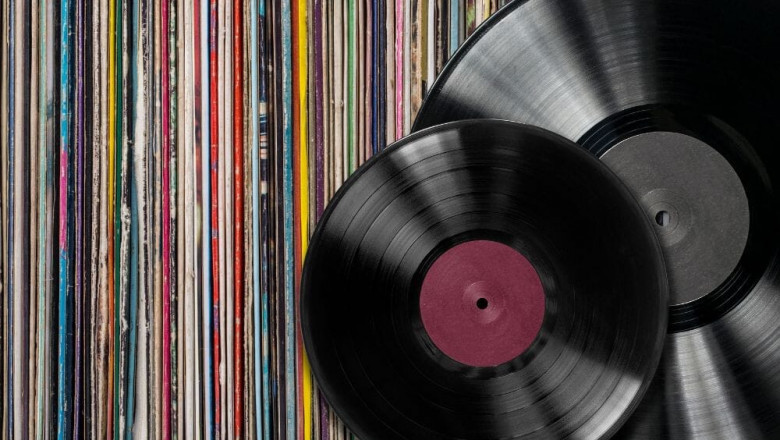views
Vinyl records have made a remarkable comeback in recent years, captivating audiophiles and music lovers with their warm, rich sound and nostalgic charm. But have you ever wondered how these iconic discs are made? The process of creating a vinyl record is a fascinating blend of artistry, precision engineering, and craftsmanship.
In this article, we’ll take you through the step-by-step journey of how vinyl records are manufactured—from the initial recording to the final product spinning on your turntable.
1. Recording and Mastering the Music
Before a vinyl record can be pressed, the music must be carefully recorded and mastered.
Recording the Music
The process begins in the studio, where artists and producers record the music. Whether it’s an analog tape recording or a high-resolution digital file, the sound must be meticulously mixed to ensure the best possible quality.
Mastering for Vinyl
Unlike digital formats, vinyl records have physical limitations that affect how sound is reproduced. A specialized vinyl mastering engineer prepares the audio by:
- Adjusting frequencies to prevent distortion (bass must be centered, high frequencies balanced).
- Ensuring the grooves aren’t too wide or too close together.
- Sequencing tracks for optimal playback (longer sides mean quieter sound).
Once mastered, the audio is transferred to a lacquer disc, the first step in the physical production process.
2. Cutting the Lacquer Master
The mastered audio is sent to a vinyl cutting lathe, where a needle (called a stylus) etches the sound waves into a soft aluminum disc coated with nitrocellulose lacquer.
How the Lacquer is Cut
- The lathe’s stylus vibrates according to the audio signal, carving a spiral groove from the outer edge inward.
- The left and right channels of a stereo recording are cut at 45-degree angles (this is how stereo vinyl works).
- The engineer monitors the process, making adjustments to prevent skipping or distortion.
Once cut, the lacquer is inspected for imperfections before moving to the next stage.
3. Creating the Metal Stamper
Since the lacquer is too soft for mass production, it must be transformed into a durable metal stamper.
Electroforming: From Lacquer to Metal
- Silver Coating – The lacquer is sprayed with a silver solution to make it conductive.
- Nickel Plating – The disc is submerged in a nickel bath, where an electric current bonds nickel to the silver-coated surface.
- Separation – The nickel layer is peeled off, creating a metal master (a negative of the original lacquer).
- Creating Stampers – The metal master is used to produce father and mother plates, which are then used to make the final stampers (one for each side of the record).
These stampers are what will press the grooves into the vinyl.
4. Pressing the Vinyl Record
Now comes the most iconic part of the process—pressing the record itself.
Ingredients of a Vinyl Record
- Polyvinyl Chloride (PVC) pellets – The raw material for vinyl records.
- Colorants & additives – Used for colored or marbled vinyl.
- Labels – Pre-printed center labels applied during pressing.
The Pressing Process
- Pellets are Melted – PVC pellets are heated into a thick, dough-like blob called a biscuit.
- Biscuit is Placed in the Press – The stamper molds are loaded into a hydraulic press.
- High-Pressure Forming – The biscuit is pressed between the stampers at over 1000 psi and 300°F (150°C) for about 30 seconds.
- Cooling & Trimming – The record is cooled, excess vinyl (called flash) is trimmed off, and labels are applied.
Each press can produce a record in under a minute, but quality control is crucial to avoid defects like warping or non-fill (missing grooves).
5. Quality Control and Packaging
Before records are shipped, they undergo strict quality checks.
Inspecting the Records
- Visual Check – Looking for scratches, bubbles, or warping.
- Playback Test – Random records are played to ensure sound quality.
- Weight & Balance – Ensuring consistent thickness and flatness.
Packaging the Vinyl
Once approved, records are:
- Sleeved in anti-static inner sleeves.
- Placed in printed jackets (often with artwork, lyrics, or inserts).
- Shrink-wrapped for retail.
6. The Final Product: Ready to Play!
After weeks of meticulous work, the vinyl record is complete. When you place it on your turntable, the stylus reads the grooves, vibrating to recreate the original sound waves—delivering that unmistakable warm, dynamic audio experience.
Why Vinyl Records Still Matter
Despite the convenience of digital music, vinyl records remain beloved for:
- Superior Sound Quality – Many argue vinyl offers a richer, more authentic sound.
- Tangible Experience – Holding an album, reading liner notes, and admiring artwork create a deeper connection to music.
- Nostalgia & Collectibility – Vinyl is a physical, lasting format that streaming can’t replicate.
Conclusion
From the delicate lacquer cutting to the high-pressure pressing, each step ensures that music lovers receive a high-quality product with a unique sonic character.
Next time you drop the needle on a record, take a moment to appreciate the incredible journey it took to reach your turntable. Vinyl isn’t just a format—it’s a labor of love.
Bollywood Vinyl Records Classical Vinyl Records Devotional Vinyl Records Dialogue Vinyl Records Dj Remix Vinyl Records English Vinyl Records Film Hits Vinyl Records Ghazals Vinyl Records Instrumental Vinyl Records Non Filmi LP Records Punjabi Vinyl Records Rare Vinyl Records Online Vinyl Shop






















Comments
0 comment